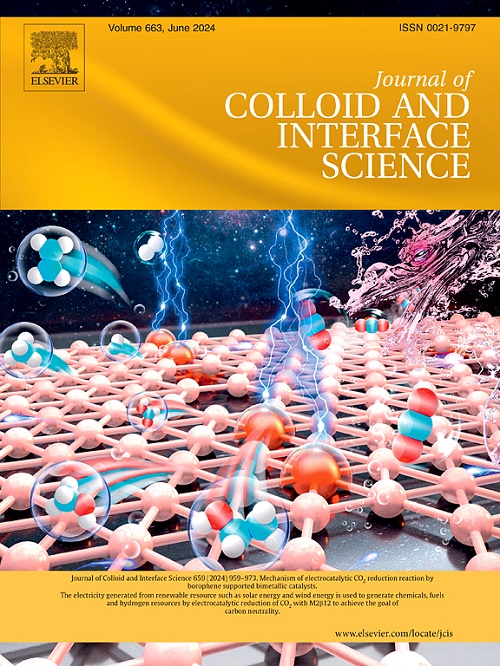Synergistic effect of Ce doping and heterointerface engineering of NiCoP/Ce-NiCo LDH for durable and corrosion-resistant electrocatalysis in alkaline freshwater and seawater oxidation
IF 9.7
1区 化学
Q1 CHEMISTRY, PHYSICAL
引用次数: 0
Abstract
Hydrogen production via seawater electrolysis is regarded as a promising avenue for utilizing sustainable energy. However, developing an efficient electrocatalyst with low overpotential and high chloride corrosion resistance remains a considerable challenge. In this research, a heterostructure NiCoP/Ce-NiCo LDH catalyst was fabricated by a simple hydrothermal-phosphorization-electrodeposition method. This catalyst features Ce-doped NiCo LDH nanosheets covering NiCoP nanoarrays. During seawater oxidation, the generated PO43− effectively inhibits ClO− formation. The NiCoP/Ce-NiCo LDH catalyst delivers a current density of 100 mA cm−2 with overpotentials of only 258 and 272 mV in alkaline freshwater and seawater, respectively. It also exhibits exceptional stability, maintaining a current density of 100 mA cm−2 for 100 h in both alkaline freshwater and seawater. DFT calculations indicate that Ce doping and the heterostructure formation in NiCoP/Ce-NiCo LDH optimize the electronic structure of the catalyst and reduce the energy barrier of rate-determining step, synergistically enhancing OER performance. This study demonstrates a promising strategy for developing durable and highly active catalytic materials for seawater electrolysis.

Ce掺杂与NiCoP/Ce- nico LDH异质界面工程在碱性淡水和海水氧化中持久耐腐蚀电催化中的协同作用
海水电解制氢被认为是一种很有前途的可持续能源利用途径。然而,开发一种低过电位、高耐氯腐蚀的高效电催化剂仍然是一个相当大的挑战。本研究采用简单的水热-磷化-电沉积法制备了异质结构NiCoP/Ce-NiCo LDH催化剂。该催化剂具有ce掺杂NiCo LDH纳米片覆盖NiCoP纳米阵列的特点。在海水氧化过程中,生成的PO43−有效地抑制了ClO−的形成。NiCoP/Ce-NiCo LDH催化剂在碱性淡水和海水中的电流密度为100 mA cm−2,过电位分别为258和272 mV。它还表现出优异的稳定性,在碱性淡水和海水中保持100毫安厘米−2的电流密度100小时。DFT计算表明,NiCoP/Ce- nico LDH中Ce的掺杂和异质结构的形成优化了催化剂的电子结构,降低了速率决定步骤的能垒,协同提高了OER性能。该研究为开发耐用、高活性的海水电解催化材料提供了一条有前景的途径。
本文章由计算机程序翻译,如有差异,请以英文原文为准。
求助全文
约1分钟内获得全文
求助全文
来源期刊
CiteScore
16.10
自引率
7.10%
发文量
2568
审稿时长
2 months
期刊介绍:
The Journal of Colloid and Interface Science publishes original research findings on the fundamental principles of colloid and interface science, as well as innovative applications in various fields. The criteria for publication include impact, quality, novelty, and originality.
Emphasis:
The journal emphasizes fundamental scientific innovation within the following categories:
A.Colloidal Materials and Nanomaterials
B.Soft Colloidal and Self-Assembly Systems
C.Adsorption, Catalysis, and Electrochemistry
D.Interfacial Processes, Capillarity, and Wetting
E.Biomaterials and Nanomedicine
F.Energy Conversion and Storage, and Environmental Technologies

 求助内容:
求助内容: 应助结果提醒方式:
应助结果提醒方式:


